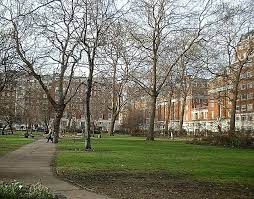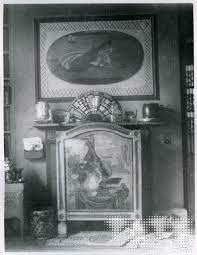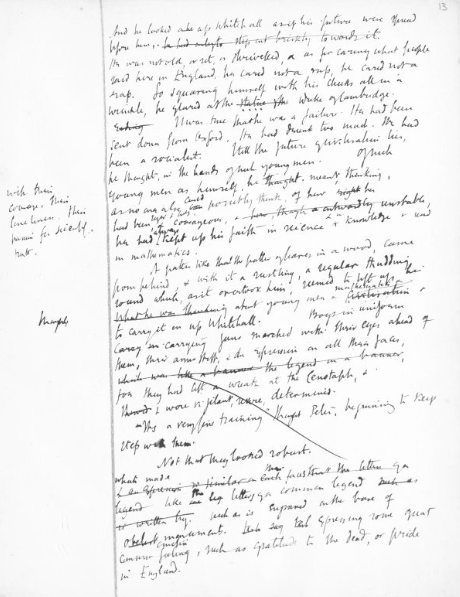Virginia Woolf, 42, settles into the big old armchair in the corner of the room, positions herself beside the gas fire to get the best morning light through the skylight, and pulls the three-ply board on to her lap to continue working on her novel, The Hours.

Tavistock Square
A couple of weeks ago Virginia and her husband Leonard, 43, moved themselves and their business, the five-year-old Hogarth Press, into the basement of this three-story building.
The Press’s offices, printing press, storage room and a shop for the booksellers’ representatives who call on them are adjacent to Virginia’s room. Above, on the ground floor are the offices of Dollman and Pritchard, solicitors; the Woolfs live on the second floor.
They have asked Virginia’s sister, Vanessa Bell, 44, and her partner, Duncan Grant, 39, to decorate their rooms.

Sitting room in 52 Tavistock Square
Of necessity, Virginia’s studio is turning into a storage room also. As she works, she is surrounded by piles of books and piles of papers. Pen nibs, paper clips, buttons, ink bottles, stationery and cigarette butts have already begun to accumulate.
But, in all the years the Woolfs have been sharing their private lives with their working life—the Hogarth Press—this is the first time they think they have enough room for both.
Virginia feels she has a space she can call her own. She decides she will finish this novel in the next four months.

A portion of the manuscript of The Hours
“Such Friends”: 100 Years Ago… is the basis for the paperback series, “Such Friends”: The Literary 1920s. Volumes I through IV, covering 1920 through 1923 are available at Thoor Ballylee in Co. Galway, and as signed copies at Pan Yan Bookstore in Tiffin, OH, City Books on the North Side and Riverstone Books in Squirrel Hill, Pittsburgh, PA. They are also on Amazon.com and Amazon.co.uk in print and e-book formats. For more information, email me at kaydee@gypsyteacher.com.
Mark your calendars! The Greater Pittsburgh Festival of Books will take place Saturday, May 11, at the Pittsburgh Theological Seminary. Stop by the “Such Friends” table in Writers’ Row.
This summer I will be talking about the literary 1920s in Paris and New York at the Osher Lifelong Learning Institute at Carnegie-Mellon University.
If you want to walk with me through Bloomsbury, you can download my audio walking tour, “Such Friends”: Virginia Woolf and the Bloomsbury Group.
Manager as Muse, about Scribner’s editor Maxwell Perkins’ relationships with F. Scott Fitzgerald, Ernest Hemingway and Thomas Wolfe, is also available on Amazon.com and Amazon.co.uk in both print and e-book versions.

